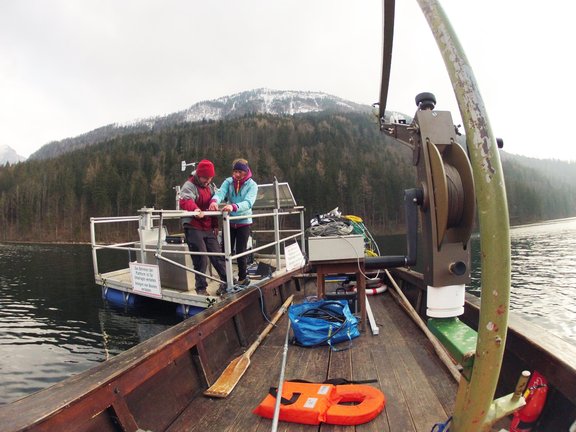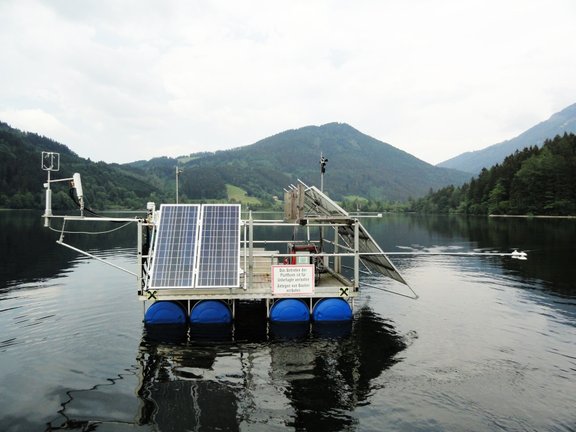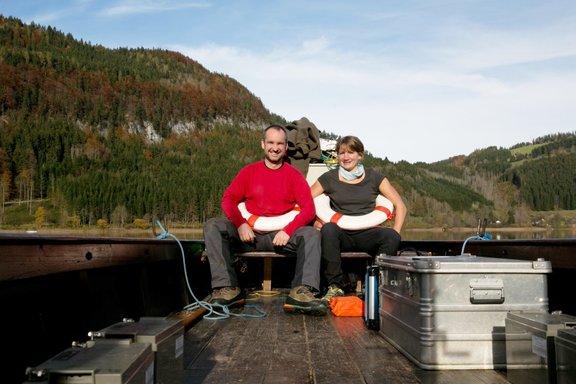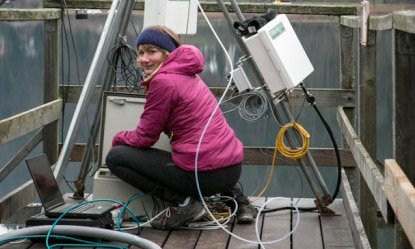Katharina Scholz is a PhD student in the Biometeorology group headed by Georg Wohlfahrt. The general focus of the group is on trace gas and energy exchange between ecosystems and the atmosphere, how it is affected by physical factors, biotic controls or human interference and how the functioning of ecosystems in turn feeds back on the state and dynamics of the atmosphere.
Katharina is focusing on the CO2 exchange of a pre-alpine lake as part of a cooperation project with the overarching aim to study possible effects of hydrological extremes on carbon fluxes at catchment scale.
For many decades, inland waters have been considered as 'neutral pipes' transporting carbon of terrestrial origin to the oceans. This perception has been increasingly redressed since recent research indicates that inland waters are significant contributors to the global carbon cycle. However, long-term measurements of carbon fluxes of freshwater ecosystems are sparse and the knowledge on the magnitude of the fluxes and the involved processes needs to be improved. Especially implications of hydrological extremes on the carbon cycle in inland waters remain poorly understood, although the frequency and severity of droughts and floods is expected to increase as climate change progresses.



As a first step, the aim of the project is to establish the complete carbon balance of lake Lunz, a pre-alpine, natural lake in lower Austria. To this end, the major carbon fluxes within the stream-lake continuum are monitored along with relevant environmental factors, like air and water temperature, or radiation. Katharina is quantifying the CO2 exchange between the atmosphere and the lake surface using the eddy covariance method – a method already widely used for long-term, continuous measurements of energy and trace gas exchange between the atmosphere and terrestrial ecosystems and more recently also applied to aquatic ecosystems. In Lunz, measurements started in December 2014 and while the instruments were set up at the shore during winter, they were installed on a floating platform during the summer 2015 and 2016

